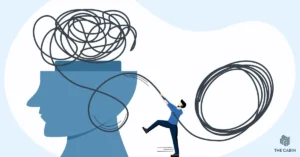
Withdrawal from any opiate is not easy, and in fact for most people is one of the most difficult experiences of their life. Because of the physical and mental pain of opiate withdrawal many people are unable to break free from their addiction. Many people who decide to get clean relapse by the end of their first week of sobriety. However, there are a few things that can help someone get through an opiate withdrawal. By following the different options below, an opiate addict may have better success at getting through an opiate withdrawal.
The Three Options
Option 1: Detox Centre
The first and probably safest option for an opiate addict is to go to a medical detox center and then onto a residential rehab for continued treatment. Detox may be done at a hospital, or specifically a detox only center.
A detox can help a person get through an opiate withdrawal easier because the staff at the center is able to treat the person’s withdrawal symptoms, while making the addict feel safe and comfortable. Most opiates take between three and five days to be eliminated from the body. These three to five days will be the most intense; therefore a detox will only last for this period.
The days during detox can seem to last forever for an addict, and unfortunately some opiate withdrawals (depending on the opiate itself and the length of addiction) may go past five days. A methadone withdrawal for example, will last longer than most other opiates.
A detox centre may administer various sorts of medications to help ease the withdrawal symptoms. Some of these medications are a partial opiate that helps to take away the symptoms without getting the addict high. A detox can help an opiate addict go through the withdrawal much faster and easier; in doing so, the person will be able to begin treatment at a residential rehab where they can attend group meetings, daily therapy, and learn new information on how to live a sober life.
Option 2: Visit a Doctor
Some people do not want to go to a detox centre. The next best option is for the person to talk to their doctor. Depending on the doctor and location, they can prescribe the opiate addict with a medication that will act as a substitute for the drug they are addicted to. Slowly, the person is able to wean their self off with the help of their doctor.
A doctor can also give instructions on the dosage and amount of medication to take each day. When doing this option, it is a good idea to have a family member or friend around to keep an eye on the addict. The downside to this option is there are no professionals around to assure the safety of the addict.
Option 3: No Help
This option is never recommended, but the addict can try to get through withdrawal on their own. Of course with this option it may be much more difficult, and this may cause the addict to relapse immediately.
There will be an intense amount of pain and discomfort when compared with the other options. If the person is able to avoid a relapse and stay clean, the memories of the withdrawal that they will retain can remind them not to use again.
Some addicts look at the advantage to this option as the person knows just how painful withdrawal is, whereas going to a detox or doctor can make an addict think that if they relapse they can simply go back to a detox or doctor. During a “cold turkey” withdrawal there will be intense levels of discomfort. Many times an addict will sleep for much of the withdrawal. Many times this type of detox fails and the user relapses, so it is never recommended.
After the Withdrawal
No matter how the addict gets through the withdrawal the next thing for them to do is to check themselves into a residential rehab. Going to rehab will teach the addict how to live with their addiction and rehab will also give them a more chance at not relapsing in early recovery.





